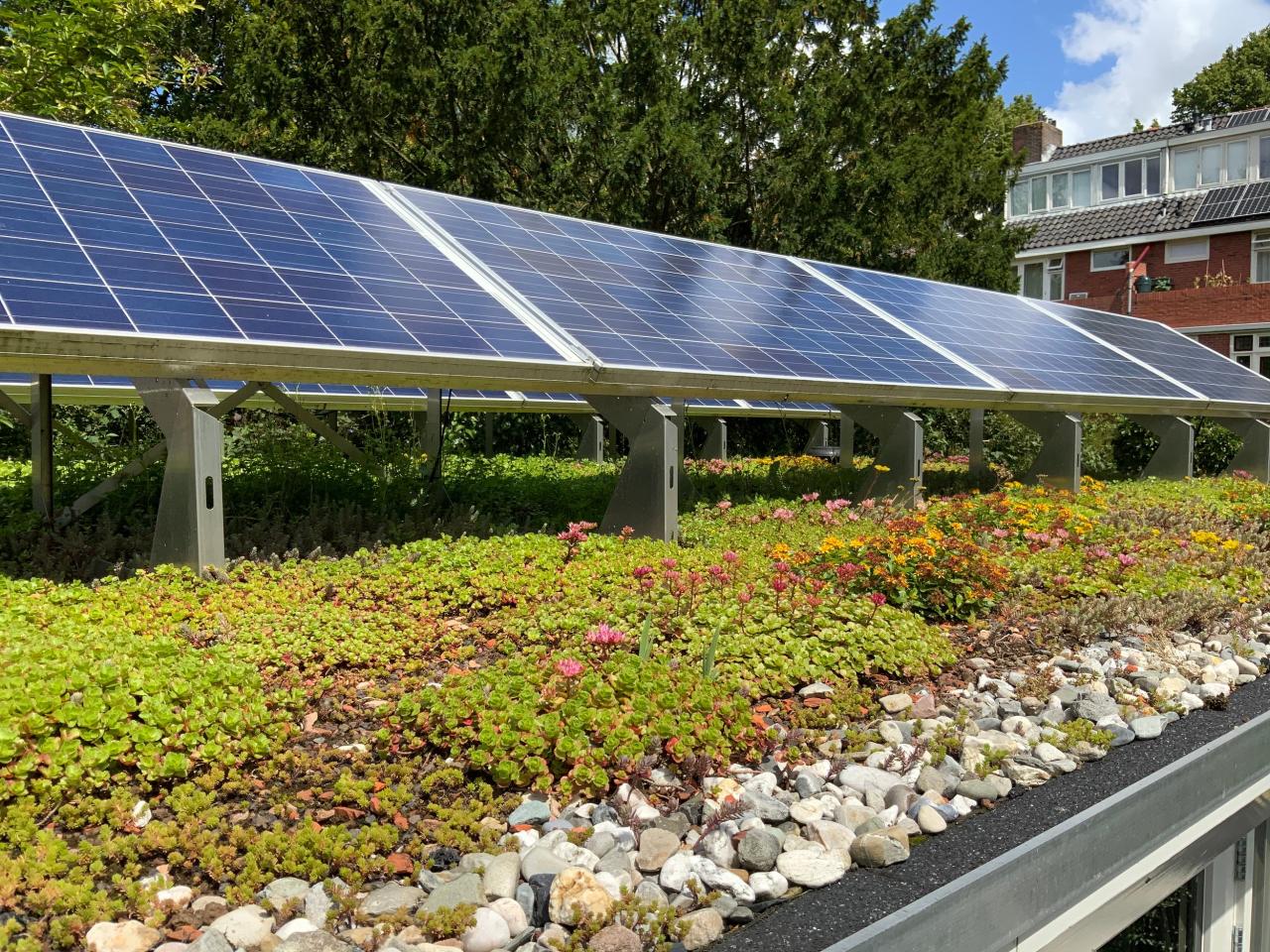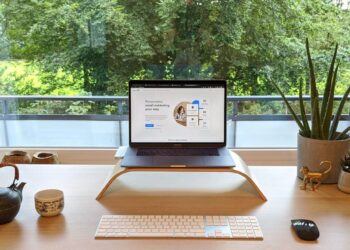Green Roofs and Solar Panels for Smart Homes introduces a cutting-edge approach to sustainable living, showcasing the seamless integration of nature and technology. From environmental benefits to financial savings, this innovative concept is reshaping the way we view our homes.
As we delve deeper into the intricacies of green roofs and solar panels, a world of possibilities unfolds, offering a glimpse into a future where eco-conscious design meets smart technology.
Benefits of Green Roofs

Green roofs offer a wide range of environmental benefits, making them a sustainable choice for modern buildings.
- Reduced Urban Heat Islands: Green roofs help combat the heat island effect in urban areas by absorbing heat and providing a cooling effect, reducing the overall temperature of cities.
- Improved Air Quality: Plants on green roofs absorb carbon dioxide and pollutants, improving air quality and creating a healthier environment for residents.
- Stormwater Management: Green roofs can absorb and store rainwater, reducing stormwater runoff and alleviating pressure on drainage systems.
Cost Savings Associated with Green Roofs
Green roofs also offer financial benefits through cost savings and increased energy efficiency.
- Energy Savings: Green roofs provide natural insulation, reducing the need for heating and cooling, which can lead to lower energy bills for building owners.
- Longevity of Roofing Materials: The presence of plants and soil can protect the roof membrane from UV radiation and extreme temperatures, extending the lifespan of the roof and reducing maintenance costs.
Impact of Green Roofs on Urban Heat Islands
Green roofs play a crucial role in mitigating the urban heat island effect by providing a natural cooling mechanism and reducing the overall temperature in urban areas.
- Temperature Reduction: Green roofs absorb heat and provide evaporative cooling, helping to lower ambient temperatures and create a more comfortable urban environment.
- Health Benefits: By reducing heat stress and improving air quality, green roofs contribute to the health and well-being of urban residents, particularly during heatwaves.
Types of Green Roofs

Green roofs come in various types, each with its own characteristics and maintenance requirements. The two main types are extensive and intensive green roofs.
Extensive Green Roofs
Extensive green roofs are lightweight and low-maintenance options ideal for buildings with limited load-bearing capacity. They typically consist of a thin layer of soil and are planted with hardy, drought-resistant plants such as sedum. These roofs require minimal upkeep, mainly consisting of occasional weeding and irrigation during dry spells.
Intensive Green Roofs
Intensive green roofs are more elaborate and versatile, with deeper soil layers that can support a wider variety of plants, including trees and shrubs. These roofs are heavier and require stronger structural support. Maintenance for intensive green roofs is more intensive, involving regular watering, fertilizing, pruning, and even mowing to keep the vegetation healthy and vibrant.Overall, the components required for a green roof system include a waterproofing membrane, drainage system, filter cloth, growing medium, and vegetation.
These components work together to provide insulation, reduce stormwater runoff, and improve air quality. The choice between extensive and intensive green roofs depends on factors such as building structure, budget, and desired aesthetics.
Benefits of Solar Panels for Smart Homes
Solar panels offer numerous benefits for smart homes, ranging from energy efficiency to financial savings and sustainability.
Energy Efficiency of Solar Panels
Solar panels harness the power of the sun to generate electricity, providing a clean and renewable energy source for smart homes. By utilizing solar energy, homeowners can significantly reduce their reliance on traditional fossil fuels, leading to a more sustainable and environmentally friendly way of living.
Financial Benefits of Installing Solar Panels
One of the key advantages of solar panels is the potential for long-term cost savings. While the initial investment may seem significant, solar panels can significantly reduce or even eliminate monthly electricity bills over time. Additionally, some governments offer incentives, rebates, and tax credits for installing solar panels, further enhancing the financial benefits for homeowners.
Contribution to a Sustainable Lifestyle
By generating electricity from a renewable source like the sun, solar panels help reduce carbon emissions and lessen the environmental impact of traditional energy production. Smart homes equipped with solar panels not only benefit the homeowners financially but also contribute to a more sustainable future by reducing the overall carbon footprint and promoting cleaner energy practices.
Integration of Green Roofs and Solar Panels
Green roofs and solar panels are two sustainable technologies that can complement each other in smart home design, offering a range of environmental and economic benefits. By integrating these two systems, homeowners can maximize energy efficiency, reduce carbon footprint, and create a more sustainable living environment.
Synergies between Green Roofs and Solar Panels
When green roofs and solar panels are combined, they can work together to improve the overall performance of a smart home. Green roofs provide natural insulation, reducing the need for heating and cooling, while also absorbing rainwater and reducing stormwater runoff.
Solar panels, on the other hand, generate clean energy from the sun, helping to power the home and reduce reliance on traditional energy sources. Together, these technologies can create a more efficient and sustainable living space.
Examples of Successful Projects
- The Ford River Rouge Complex in Michigan features a green roof with solar panels, reducing energy costs and carbon emissions.
- The California Academy of Sciences in San Francisco has a living roof with integrated solar panels, showcasing the synergy between nature and renewable energy.
- The Bullitt Center in Seattle is a net-zero energy building with both green roofs and solar panels, demonstrating the potential for sustainable design.
Challenges and Considerations
Integrating green roofs and solar panels in smart home design comes with some challenges and considerations. One of the main challenges is ensuring that the structural integrity of the building can support the weight of both systems. Proper waterproofing and drainage systems are also essential to prevent leakage and water damage.
Additionally, the orientation and shading of the roof play a crucial role in maximizing the efficiency of solar panels, which may require careful planning and design adjustments. Overall, careful consideration of these factors is necessary to successfully integrate green roofs and solar panels in smart home projects.
Closing Summary
In conclusion, Green Roofs and Solar Panels for Smart Homes epitomize the marriage of sustainability and efficiency, paving the way for a greener tomorrow. As we embrace these transformative technologies, we move towards a more eco-friendly and energy-efficient future for all.
User Queries
What are the key environmental benefits of green roofs?
Green roofs help reduce urban heat islands, improve air quality, and provide natural insulation, leading to energy savings.
What types of maintenance are required for different green roof systems?
Extensive green roofs typically require less maintenance compared to intensive green roofs, which may need more frequent care due to their deeper soil layers.
How do solar panels contribute to a sustainable lifestyle?
Solar panels harness renewable energy from the sun, reducing reliance on traditional power sources and lowering carbon emissions, thus promoting a sustainable way of living.








